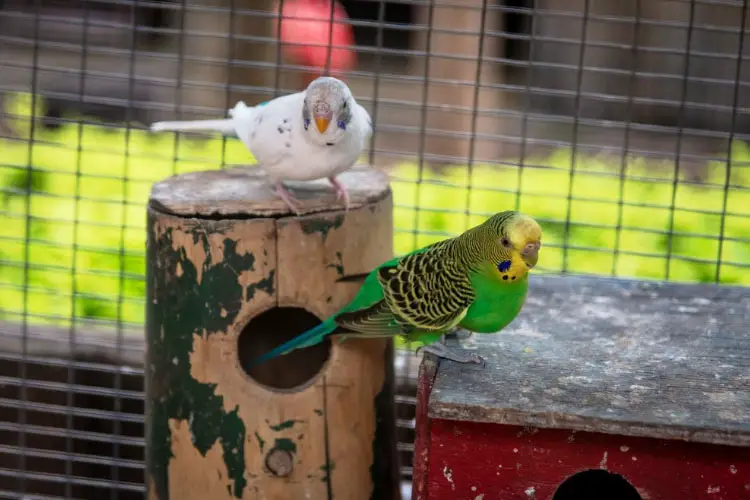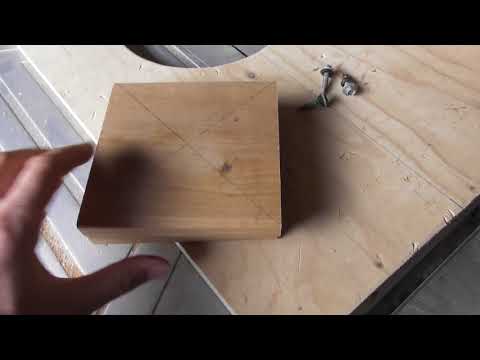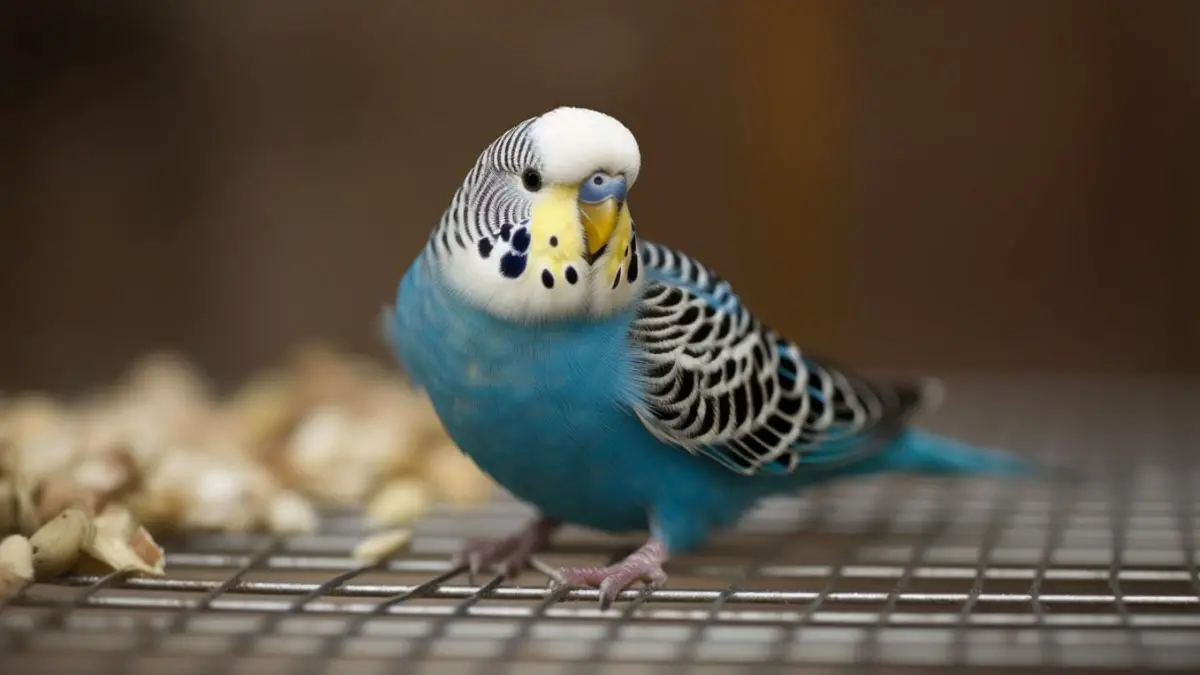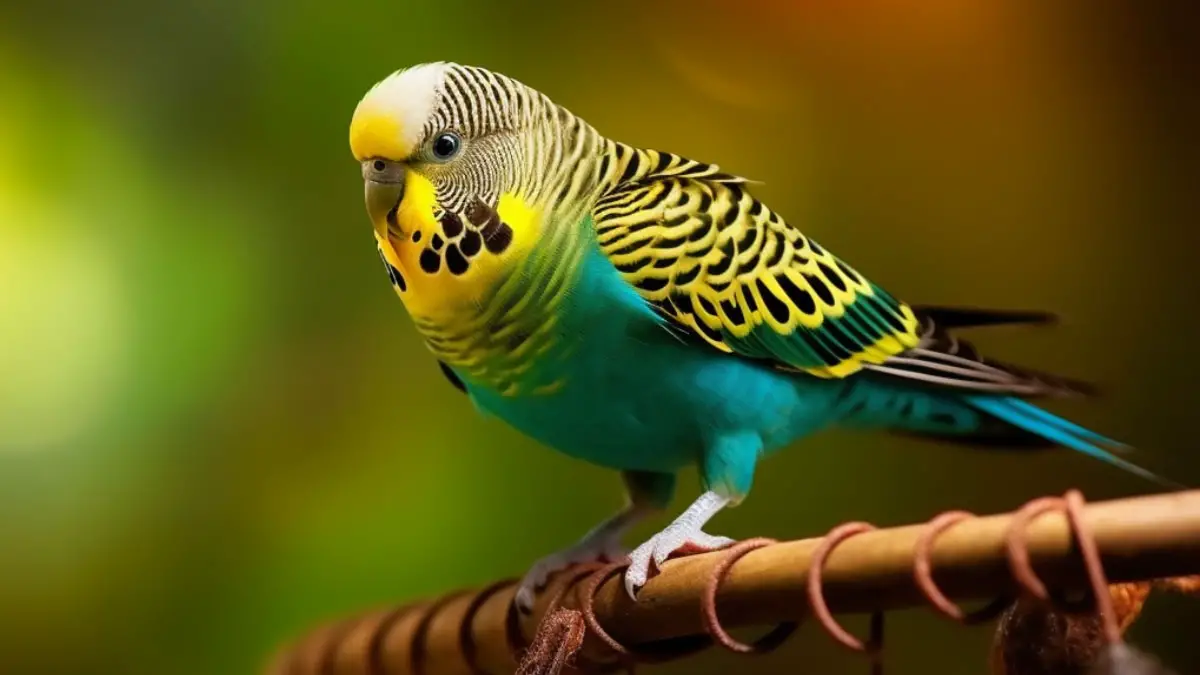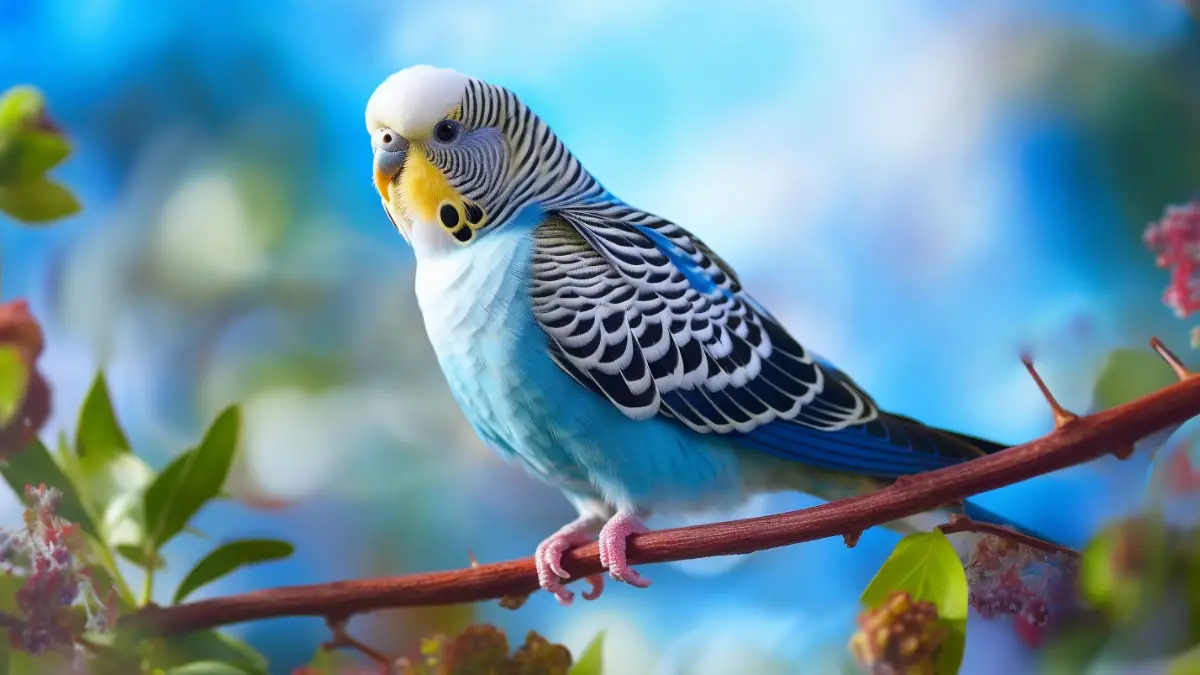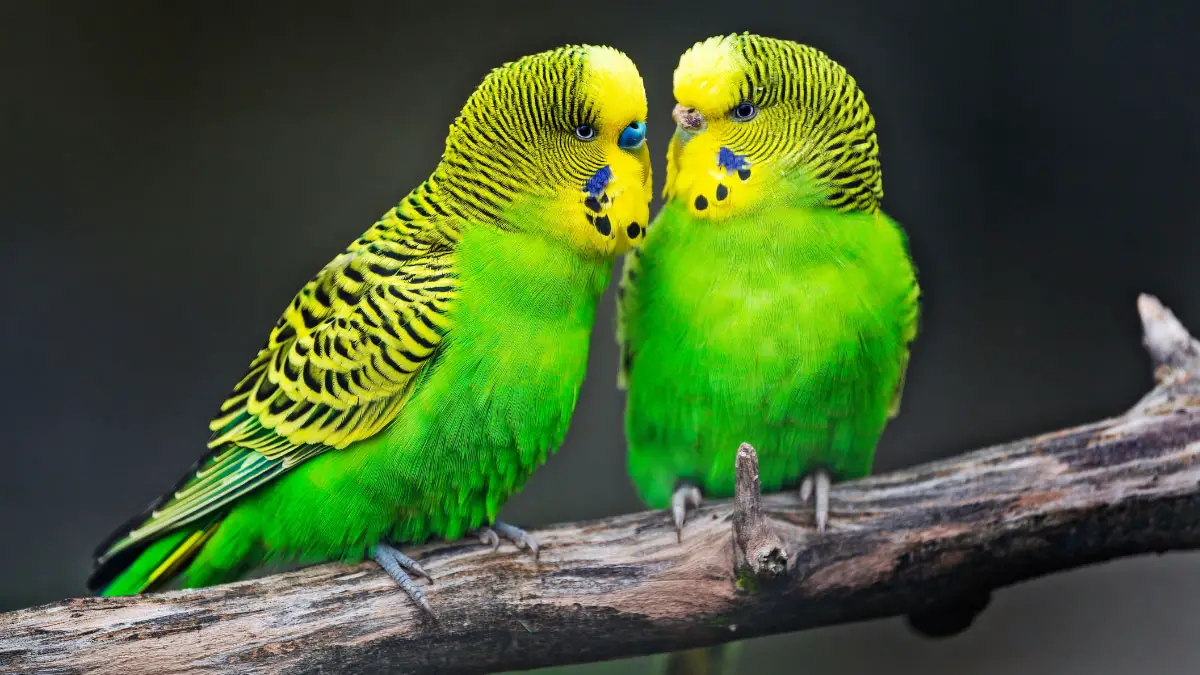Keeping a single pet budgie is great to start with. But after a while, you’ll probably want another, especially when you’re ready to breed and rear the chicks from infancy. As a budgie owner, one of your frequent thoughts is whether or not your breeding budgie needs a nest box. It can be challenging to figure out when to provide the nesting box and what materials to put in it.
Do budgies need a nest box? Yes, they do. Pet budgies cannot build their nests, so you must provide one for them. You should be aware that budgies can mate without a nesting box. The nest box provides a safe place for the budgies to lay their eggs. It will also give the budgies a place to rest, make reproduction easier, and provide the ideal environment for the eggs to hatch.
This article will educate you on some major concerns regarding budgie’s nest box.
Do Budgies Need A Nest Box?
Yes, budgies require a nest box for safe and relaxed reproduction. In nature, budgies make their nests in hollow trees; however, in captivity, you must supply them with a nesting box. Due to their low maintenance, parakeets do not require a traditional nest; they only require a safe place to lay their eggs.
Your parakeet will be pleased with a small hiding spot within its cage where it can relax, sleep, and hide. Wooden nest boxes are the best option. Budgies are simple nesters, requiring only a dry surface lined with soft nesting material to lay their eggs.
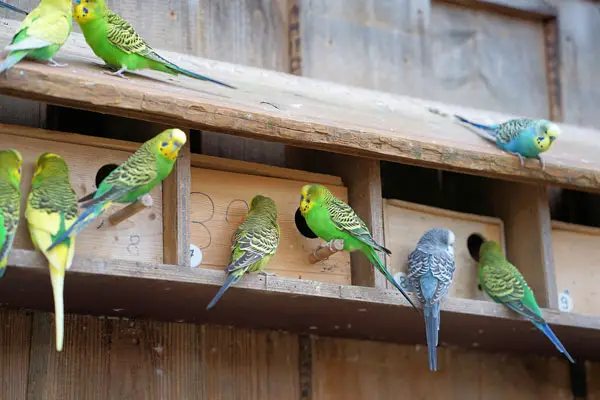
Some parakeets do not even use a nest box; instead, they collect their cage’s bedding and select a site within the cage as their nesting habitat. However, a nest box makes the parakeets considerably more comfortable and facilitates cage cleaning.
The box floor must be concave to facilitate the chicks’ gripping. This will prevent the chicks from acquiring splayed feet, which might result from standing on a flat, hard surface. Put the nest boxes within the bird enclosure or attach one to the cage’s exterior. Ensure the cage door is left open to allow the female budgie (and her offspring) access the cage.
What Should I Put In My Budgies Nest box?
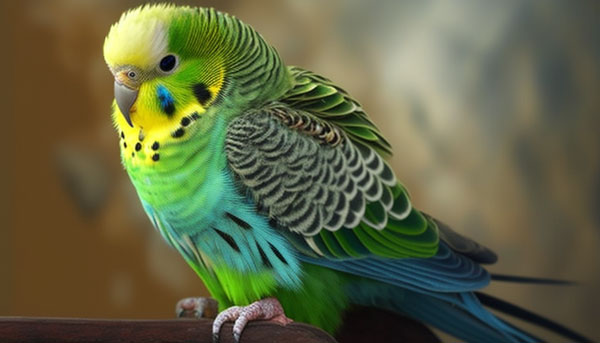
The essential items for a nesting box are:
- Nesting material
- A concave circle
- Mineral blocks
Your female budgie will spend a lot of time in the nest box. So it is up to you to ensure that the bird lives as comfortably as possible and has daily access to fresh food and water.
1. Nesting material
For budgies, less is more, so use only one kind of nesting material. You can utilize the following;
- Dried grass
- Small twigs
- Shredded paper
- Unscented timber shavings
- Coarse sawdust
- Fallen leaves
Sometimes you might find the budgie removing the nesting materials. So to counter this, provide it with nesting material and let it line the box. The budgie will spend up to a month in the box, so it is paramount to ensure it is comfortable.
Nesting material helps to keep the eggs warm and prevents them from rolling around. It is also essential that the chicks have something to grip onto as they grow. Standing on a flat surface can lead to splayed feet, a condition where bones are underdeveloped.
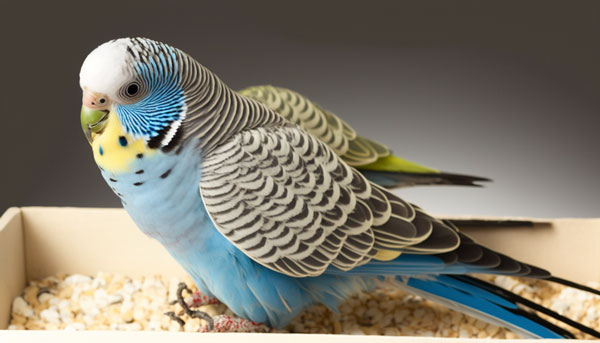
All the above materials have their advantages and disadvantages. However, wood shavings are better than most materials since they are more absorbent and create a cozier bed. Paper gets damp faster than wood shavings, promoting the growth of hazardous bacteria. It also emits ammonia, which is toxic to parakeets.
Wood shavings are also warmer than paper. The best wood shavings are aspen shavings. They are unscented, and most budgies like them because they use them in the wild. However, paper is not devoid of benefits. Paper is cost-free, abundant, and simpler to replace than wood shavings.
2. Concave Circle
The bottom of the nesting box should be concave-shaped. This ensures that the chicks do not have to stand on a flat surface when learning to walk. A flat surface can be hard to walk on and cause poor bone development. When a chick has this abnormality, its legs point outward rather than beneath its body.
A concave circle provides the budgies with a surface to grab as they wander around the nesting box. It also provides a backup if the female budgie removes all nesting materials from the box. If the nesting box lacks a concave circle, one can be made or purchased separately.
3. Mineral Blocks
Female budgies require a significant amount of calcium during the egg-laying season. Calcium helps with the development of egg shells and also prevents egg binding. Egg binding occurs when a female bird has difficulty delivering an egg via her reproductive canal. It is a potentially fatal condition that you should prevent at all costs.
Even after laying eggs, your budgie will require more calcium for a few weeks. Cuttlebone or mineral blocks are a rich source of minerals such as Calcium Carbonate, Magnesium, Potassium, Iron, and Zinc.
You can fill the nesting box with small pieces of cuttlebone and mineral blocks. You must provide as much food as your budgie will consume every day. Replace mineral blocks and cuttlebone daily and inspect for mold. Budgies also use cuttlebone to groom their beaks, similar to how humans use nail files.
How Do I Build a Budgie Nesting Box?
Here is a step-by-step guide on how to construct a budgie nest box.
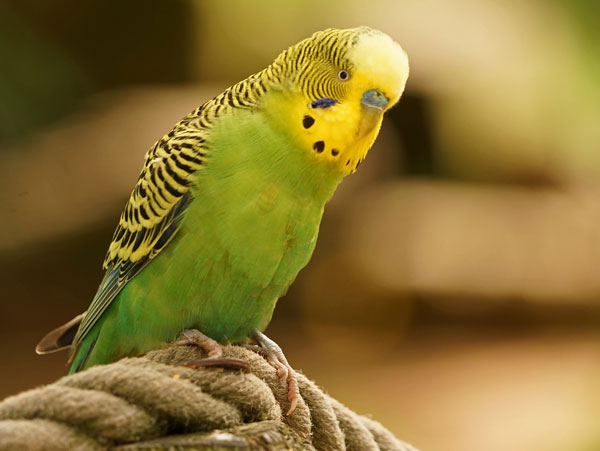
Things you will need;
- Wood panels
- Circular saw
- Rotating cutting device
- Cordless power drill
- Hammer
- Ruler or tape measure
- Goggles
- Dust mask
- Ear muffs and gloves
Here is how to construct a budgie nesting box.
Step 1: Get the Right Panel
Get your wood panels. Constructing the nest box out of wood rather than any other material is essential. Budgies love chewing, so if you make one out of cardboard, the parakeet will shred it. The best wood to use is plywood. Acquire 90 square feet of wood to ensure there is enough. The wood panels should also be at least 2cm in thickness.
Step 2: Cut the Wood Accordingly
Wear protective gear to ensure wood shavings do not get into your eyes and your hands. Using your circular saw, you must cut the wood into four 25cm x 15 cm panels for the sides of the box and two panels 15cm x 15 cm for the top and bottom.
Ensure you measure before cutting the wood. Mark the wood with a carpentry pencil to keep your cuts exact and straight. You can also purchase pre-cut wood from a hardware shop.
Step 3: Create a Box Entrance
Using your rotating cutting device, create a circular opening in one of the side panels. Cut a 3” diameter circle. This will act as the box’s entrance. Ensure you place it close to the cage’s floor so the parakeet can enter.
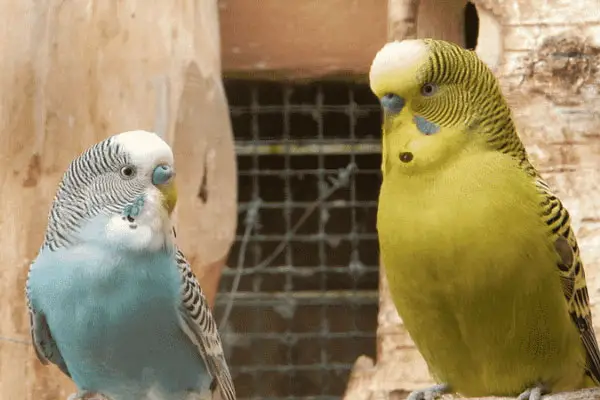
Step 4: Nail Each Side Properly
Using your hammer, nail the bottom and sides of the nest box together. It is advisable to build a box with a detachable lid. In this way, it will be easy to clean. To accomplish this, refrain from placing the top on the box.
First, nail together all of the side pieces. Place a nail in the lower corner and the upper corner of each side panel. Then attach the bottom by nailing each of the four corners. Keep the nails straight as you hammer them into the box, or they will puncture the box’s interior. If this occurs, remove the nail and try again.
Step 5: Cut and Place a Perch
Place a perch beneath the box’s opening. A perch helps the parakeet exit and easily enter the nest box. To construct the perch, cut a square piece of wood a few inches in size and fix it with wood glue slightly below the circular hole you cut.
Step 6: Fasten the Lid
Create holes to fasten the box’s lid. On both the left and right sides of the box, drill two holes. Then, drill similar holes in the upper section. Using wire to secure the top of the box is a simple technique to make it detachable. Place the lid on the box, then thread the wire through the holes.
Step 7: Line the Base with Nesting Material and Get a Concave Circle
Line the base of the box with the nesting material of your choice. This will provide comfort and safety for the eggs and, later, the chicks. As I mentioned earlier, nest boxes also need concave circles. You can construct a DIY concave circle or purchase one already made. Here is a video to help you know how to create them.
Where Do I Put My Budgie Nest?
The placement of the nest box is crucial. The ideal area to place a nest box is hanging on the rear of the cage or aviary. Ensure the box’s hole does not face the sun’s direction. That can make the budgies agitated and feel less safe.
So ensure that you hang the nest box in the darkest spot at the rear end of the cage, i.e., away from light sources and human observation. The problem with the nest box’s entrance facing the room is that when the budgie is startled by the presence of the keeper or visitors, it will hurry and jump into the box. That can cause the eggs to be damaged.
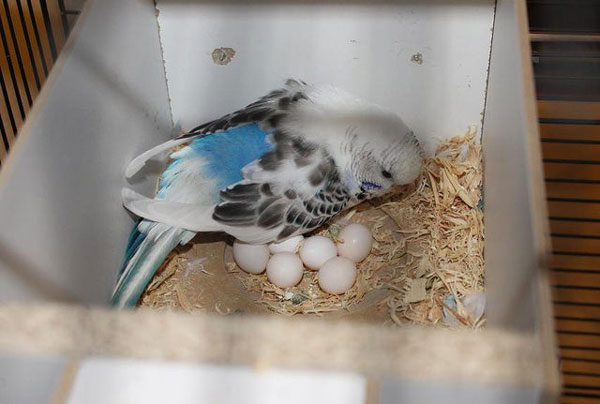
Also, the nighttime activity of rodents may be a factor in birds rejecting the nest box. A budgie will not enter a nest box if a lizard or rodent is present. Check the nest box accordingly. Another tip is to ensure that the entrance is only big enough to let the budgie in. Birds require small nesting boxes in which they can feel secure.
Do Budgies Like to Sleep In a Nest?
The only time a budgie will sleep in a nest is during breeding. Most budgies sleep on their perches or at the bottom of the cage. Some parakeet owners provide their parakeets with a sleeping hut or bed. A sleeping hut is not the same as a nesting box in that it does not require to have nesting material.
The hut provides a space for heat insulation. Even though overnight temperatures tend to decrease, these huts retain heat, allowing the budgies to remain warm despite the chilly conditions. They also act as hideouts when the bird is scared, and the budgie can use them as resting areas.
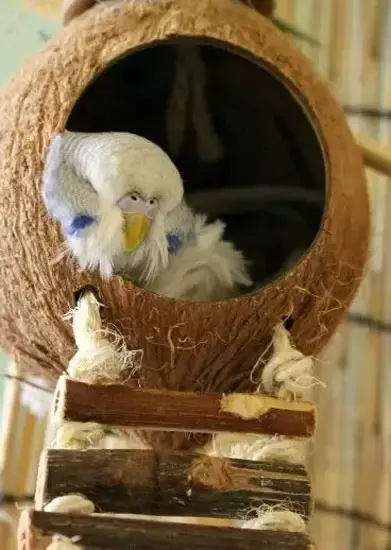
However, not all budgies recognize sleeping huts, so they do not utilize them. Some budgies will attempt to turn them into nesting areas by taking nesting material inside them.
Should I Clean My Budgie’s Nest?
Keeping the budgie nest box clean is essential to ensure budgies remain healthy. You should clean the box at least once per week.
Cleaning ensures you remove any parasites inside the budgie’s nest and excrete soiled nesting material. The following section will look at a step-by-step guide on cleaning a budgie nesting box.
How Do You Clean a Budgie Nesting Box?
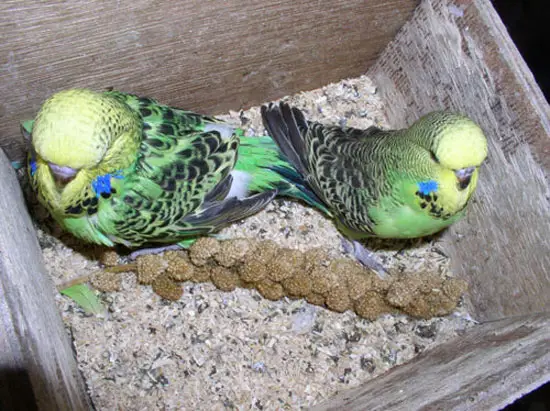
Here is how to clean a budgie nest box.
Step 1: Slowly Open the Nest Box
Open the nest box slowly so as not to alarm the mother budgie. Remove the lid and call the budgie to you by enticing it with its favorite treats. Once the budgie is out, remove the baby chicks and place them securely at the bottom of the cage.
Over time they will develop accustomed to the regular disturbance. Line the area with the same material as the nesting box so that the bay budgies do not feel much difference.
Step 2: Remove the Nesting Material
Remove all the nesting material, especially if you can smell a stench from the box. Also, if the eggs have recently hatched and there is still the presence of unhatched eggs, remove them too.
Step 3: Use Vinegar Solution to Clean the Box
Use vinegar and water to clean the nesting box. Do not use detergents because they can leave odors dangerous to the budgies. However, some detergents are pet-friendly and found in pet stores. To rinse, use hot water to ensure you get rid of all parasites and their eggs that might have survived the first wash.
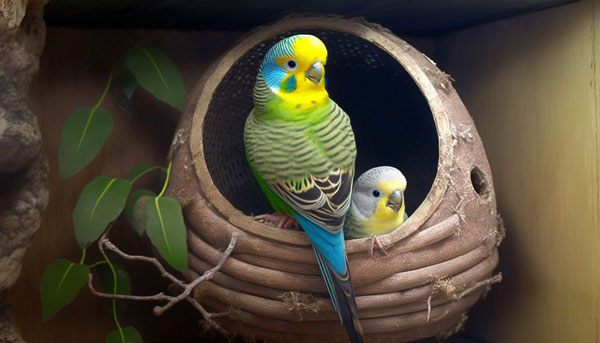
Step 4: Air Dry It
Air dry the nest box and line it with fresh nesting material when completely dry. Carefully put back the baby budgies. Reattach the nest box cover and entice the mother budgie back into its cage.
FAQs
Here are other related questions on the topic. Check out their answers below.
A typical budgie nest should be 25cm x 15cm x 15cm. These dimensions are large enough for both the English and Normal budgies. You can go bigger if you want to house many chicks.
The best time to remove the nesting box is after the spring season has ended, i.e., at the beginning of September. By then, the budgies will have stopped using the nesting box. You can also remove the nesting box to prevent the budgies from breeding.
You should clean your budgie’s nesting box once a week or anytime you smell or notice an odor coming from the nesting box. Ensure you use absorbent nesting material like wood shavings, not paper. This way, the bedding can last up to two weeks.
Conclusion
Budgies need nesting boxes, especially during the breeding season. A nesting box provides the budgie with a sense of security and keeps its eggs warm. Ensure you provide nesting material, a concave circle, and a cuttlebone inside the nesting box.
Use nesting material that is absorbent such as wood shavings. You should also clean the nesting box every week to eliminate any parasites. Also, ensure the nesting box is in the rear end of the cage with its entrance facing away from people’s view.
